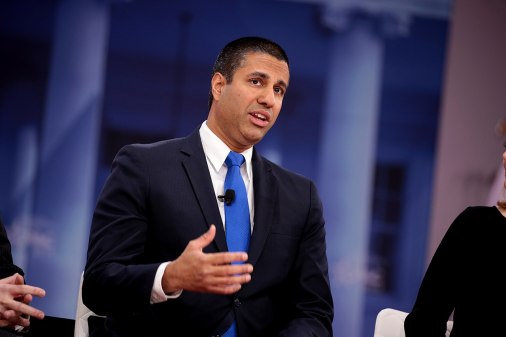Broadband’s spread is transforming classroom education

Digital learning not only plays a crucial role in preparing today’s students for the jobs of tomorrow, it also has an important role in providing more equitable access to education, especially in smaller and remote school districts.
These factors make access to adequate and reliable broadband even more important as the development of new technologies continues.
The State Educational Technology Directors Association is now preparing to accommodate next-generation technologies such as 5G wireless, virtual reality, robotics and eSports. In a recent webinar hosted by edWeb.net, Christine Fox, the group’s deputy executive director, said these emerging technologies provide both opportunities and challenges for school districts.
Today, 28 states have statewide K-12 broadband networks, Fox said, while 9 states use regional networks and 16 states use alternative methods such as purchasing consortia. But all these organizations share a commitment to developing a modern, agile workforce comprised of lifelong learners, who can grow along with evolving technologies.
While there’s a strong focus on preparing students for the future of work, both in terms of the variety of jobs and how those jobs are continuing to change, educational networks also need to provide ongoing support for day-to-day tasks, through personalized learning, enabling students to take online assessments, and helping administrators efficiently accomplish their tasks in an accurate and secure way. There’s also an emphasis in education today on ensuring inclusion of students from all walks of life.
This requires technological leadership with a shared vision that includes input from all stakeholders, as well as clear goals, effective communication and the use of research-based best practices. This also requires reliable broadband access that is scalable and available to meet the needs of changing technologies and student populations.
Looking to the future, Fox said administrators are moving beyond providing broadband to a building, and instead focusing on making it accessible throughout a facility. Digital learning no longer occurs in just the classroom, and schools need to look at providing access in a variety of areas and at different times of days, so students without internet access at home have a secure, reliable connection.
Marc Johnson, executive director of the East Central Minnesota Educational Cable Cooperative, who joined Fox on the webinar, said Minnesota has 18 regional networks, most of which now use leased fiber-optic networks. This provides the state with a scalable infrastructure, he said, and by monitoring disruptions and usage levels, administrators can buy additional bandwidth to accommodate future growth.
The ECMECC staff provides instructional technology support for districts, which is especially important for smaller ones that may not have full-time tech support people of their own. The staff also manage the network’s shared firewall and other security features that help to prevent cyberattacks. A data center, meanwhile, provides off-site storage and backup.
Moving forward, Johnson and his team will be facilitating schools’ implementation of 1:1 device initiatives, and the introduction of more 21st century digital courses. Districts can make their own through a process he called “curriculum adaptation,” rather than curriculum adoption.
A key aspect of this type of teaching and learning is the increased use of interactive video for online field trips or other activities. Examples include the opportunity for high school students taking health classes to observe and interact with medical personnel as they perform procedures, or observe a musician in a distant city teaching classes and leading rehearsals.
This type of distance learning can be especially valuable for smaller rural districts, but also for underfunded districts in urban areas that may not have the resources to send students to other parts of the city.
About the presenter
Marc Johnson is Executive Director of East Central Minnesota Educational Cable Cooperative (ECMECC), a telecommunication and technology cooperative of fourteen K-12 school districts in East Central Minnesota. Marc is in his eleventh year as ECMECC director having spent two years prior as technology director for ISD 15 and seven years as an instructional technology specialist for the St. Croix River Education District. Previously, he taught middle and high school mathematics and college technology courses. Marc brings eleven years of experience managing a regional wide area network providing Internet access, shared network services, and network security to over 39,000 students, 2,800 faculty/administrators, and 2,200 educational support staff. On the broadband front, Marc serves on the Blandin Foundation Broadband Strategy Board and is an appointed member of the Minnesota Governor’s Task Force on Broadband. Marc continues to advocate for and work with several other broadband initiatives in the state and with organizations like SETDA.
About the host
Christine Fox serves as Deputy Executive Director for SETDA. As the deputy executive director, she collaborates with the executive director in charting strategic direction, administration, planning, and financial decisions involving SETDA. She also facilitates the members’ professional learning opportunities, including planning and implementing the content for SETDA’s virtual and in-person events and newsletters. In addition, she manages many of SETDA’s research and product development projects from conception to publication. The management of such projects includes coordinating data collection from all states, supervising consultants and staff, ensuring member input and supervising the publishing process. Recent publications and projects include Navigating the Digital Shift reports 2015-2019, the Professional Learning and K12 Instructional Materials Dashboards, the Broadband Imperative Report Series, Guide to Quality Instructional Materials, Digital Instructional Materials Acquisition Policies for States, and The Broadband Imperative II: Equitable Access for Learning. Christine Fox’s background includes experience in education and consulting. She has worked as an educational consultant and curriculum developer for a national whole-school reform model, ESOL Coordinator, and 3rd-grade teacher. Christine has a Master of Science in teaching English as a second language from Florida International University and received her bachelor’s degree in English literature from Florida State University. She lives in South Florida with her husband and two daughters.
Join the community
Essential Elements for Digital Content is a free professional learning community on edWeb.net that provides policy makers, school administrators and educator leaders a better understanding of policies and practices related to digital instructional materials.
The edWeb webinar referenced above, hosted by SETDA and sponsored by ENA, can be found here.




